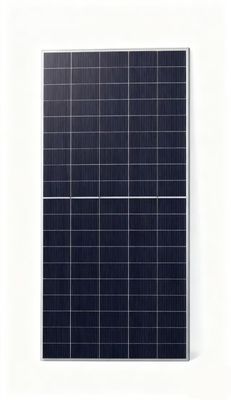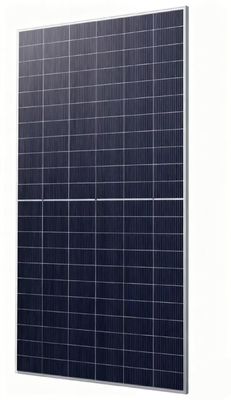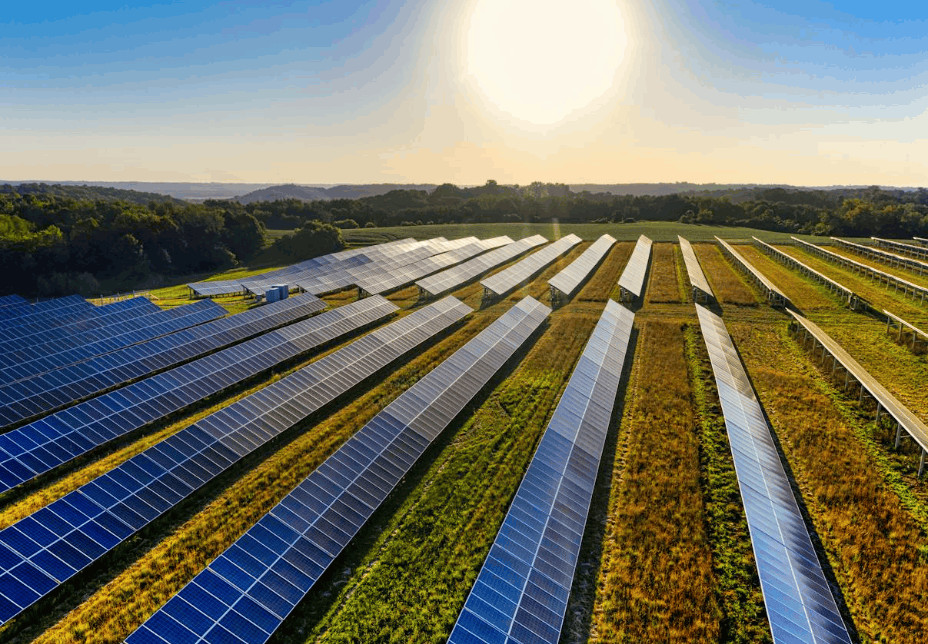700W Bifacial Dual Glass Monocrystalline Solar Module: Optimized Performance for Demanding Applications
In the competitive solar energy market, our 700W Bifacial Dual Glass Solar Module delivers an exceptional balance of high power output and proven reliability. Designed for commercial and utility-scale installations, this panel incorporates advanced bifacial technology with robust construction to ensure consistent energy generation in diverse environments. The module's intelligent engineering focuses on maximizing the energy yield per unit area while maintaining structural integrity under challenging weather conditions, making it a prudent choice for investors seeking long-term, stable returns from their solar assets.
The cornerstone of this module's performance is its sophisticated bifacial design with 80% bifaciality. This enables the capture of reflected and diffuse light on the rear side, boosting the nominal 700W power output by up to 8% under standard test conditions (10% rear irradiance), reaching approximately 756W. This characteristic is particularly advantageous in installations where the rear side can receive reflected light from light-colored surfaces, such as commercial rooftops with white membranes or sandy ground surfaces in utility-scale plants.
Durability is engineered into every aspect of the module. The dual-glass construction, comprising a 2.0mm anti-reflective front glass and a 2.0mm heat-strengthened rear glass, provides a hermetic seal against environmental elements. This design effectively mitigates Potential Induced Degradation (PID) and offers superior resistance to humidity, fire, and UV degradation. The sturdy anodized aluminum frame complements this by providing excellent mechanical strength, enabling the module to withstand wind loads up to 2400 Pa and snow loads up to 5400 Pa.
With a commendable module efficiency of 22.53%, this 700W panel ensures that you extract the maximum possible energy from your available installation space. The 132 half-cut monocrystalline cells work efficiently by minimizing internal electrical losses and enhancing performance in partial shading conditions. Furthermore, the module's favorable temperature coefficient of -0.29%/°C for Pmax means it retains a higher percentage of its rated power output on hot days compared to modules with poorer temperature coefficients, ensuring reliable summer performance.
System integration is streamlined with a 1500V DC maximum system voltage, allowing for longer string lengths and a reduction in the number of combiners and cables required, thereby lowering overall balance-of-system costs. The module is equipped with an IP68-rated junction box for ultimate weatherproof protection and comes with MC4-compatible connectors and a 4.0mm² cable, which can be customized in length to meet specific project installation requirements.
Distinguishing Features and Benefits:
-
Proven Bifacial Energy Gain: Harnesses rear-side irradiance to deliver additional energy yield, effectively increasing the power output beyond the standard 700W rating and improving project economics.
-
Robust Glass-Glass Encapsulation: Offers exceptional protection against mechanical stress, environmental weathering, and electrical degradation, promising an extended product lifespan and lower annual degradation rates.
-
Reliable High-Temperature Performance: The low power temperature coefficient ensures stable energy production and minimizes efficiency drops during peak temperature operations, a critical factor for consistent output.
-
Certified Mechanical Resilience: Rigorously tested to endure severe weather conditions, including heavy snow and high winds, ensuring operational integrity and investment protection.
-
Reduced Balance-of-System Costs: The 1500V system voltage and high power rating per module lead to fewer components and lower installation costs for large-scale projects.

Primary Applications:
This 700W bifacial module is engineered to excel in a variety of settings where reliability and enhanced energy harvest are key.
-
Commercial Rooftop Systems: Ideal for flat or slightly inclined commercial roofs where its bifacial properties and durable construction provide significant advantages.
-
Utility-Scale Solar Power Plants: Its high unit power and bifacial gain contribute to higher energy density and improved land utilization efficiency.
-
Agricultural and Agri-Voltaic Setups: Can be installed over farming areas, with the bifacial feature capturing light reflected from the ground surface.
-
Industrial Ground-Mounted Arrays: Suitable for industrial zones where its robust build quality ensures long-term performance.
Frequently Asked Questions (FAQ):
-
Q: What is the real-world energy gain I can expect from the bifacial feature of this 700W module?
-
Q: Why should I choose a dual-glass module over a traditional backsheet module?
-
A: Dual-glass modules offer superior resistance to moisture, UV exposure, and PID. They typically have a longer operational lifetime and a slower power degradation rate, which translates to more energy generated over the system's life.
-
Q: Can these modules be installed in areas with heavy snowfall?
-
Q: What kind of warranty supports this product?
Important Installation and Safety Precautions:
Installation must be performed by qualified personnel in accordance with all local electrical and building codes. Please review the complete installation manual before handling or installing the modules. Use only compatible mounting structures and ensure that the electrical configuration (string size) does not exceed the module's maximum system voltage and the inverter's operating range. Avoid mechanical impact, shading, and using damaged modules. Always use appropriate safety gear during installation.
Technical Specifications







 Uw bericht moet tussen de 20-3.000 tekens bevatten!
Uw bericht moet tussen de 20-3.000 tekens bevatten! Controleer uw e-mail!
Controleer uw e-mail!  Uw bericht moet tussen de 20-3.000 tekens bevatten!
Uw bericht moet tussen de 20-3.000 tekens bevatten! Controleer uw e-mail!
Controleer uw e-mail! 










